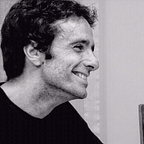Understanding LAOS Network: A Layer-1 that bridgelessly connects to other blockchains
Yes, LAOS is a Layer-1. Yes, users can mint millions of NFTs in the blockchain of their choice (e.g. Ethereum) without paying native gas fees. Yes, LAOS is bridgeless.
If you’re thinking “accelerating the transactions of Layer-1s like Ethereum sounds like the job of a Layer-2. So how is LAOS a Layer-1?”, then this article is for you. Let’s dive in.
LAOS is a Layer-1
At its core, LAOS stands as a Layer-1 (L1) parachain — independent, self-sufficient, self-governed and, at the same time with strong guarantees: every single transaction is ultimately verified by the Polkadot relay chain.
Layer-2 (L2) solutions that build on top of existing blockchains like Ethereum pay severe prices in security. Check the amazing work by L2Beat in monitoring such compromises, and you’ll find everywhere, including the main L2s, either of the following: “only a handful of whitelisted actors can submit”, “user withdrawals can be censored by the permissioned operators”, “there is no way to verify the system”, “Proof construction relies fully on data that is NOT published on chain”, “Data depends on a Data Availability Committee with a threshold of 5/7”.
Because of Polkadot, LAOS is free from all such issues. TXs cannot be wrong. Data is available by construction. There aren’t permissioned actors nor whitelists. Full stop.
LAOS is a Universal Layer-1
But most importantly, unlike L2s, LAOS is not tethered to one single network; and unlike solo L1s like Avalanche, LAOS’ future does not depend on its capability to build a whole new ecosystem of DApps from scratch. This is because LAOS is built to be connected to all such networks and ecosystems from day 1… without bridges. In other words, LAOS will scale both Ethereum, Polygon, and all of their L2s.
Polkadot has recently deployed the latest version of Cross Chain Messaging protocol (XCMv3), which is designed to allow blockchains to interact with each other effortlessly. LAOS’ connectivity leans heavily on an aspect of XCMv3 called Universal Location: a way for different consensus systems to refer to resources within each other. Think of the way that the web uses URLs to refer to different websites and webpages: Universal Location does the same thing for blockchains, smart contracts, and tokens.
LAOS leverages this piece of technology to develop bridgeless patterns, by which every blockchain can offload part of their transactions. Simple counting of on-chain transactions from the last 2 years show that more than 20% of all transactions in Ethereum and Polygon can be offloaded right away to LAOS. By comparison, the usage of Ethereum resulting from all of its L2s combined oscillates between 10% and 15%, a fact important enough to motivate the recent Dencun upgrade in order to lower the corresponding TX fees.
A New Paradigm for Asset Minting: Bridgeless and Gas-Efficient
One of the most notable such patterns developed for LAOS is its bridgeless minting capability. Traditionally, minting of Non-Fungible Tokens on Ethereum requires either paying large gas fees; on Polygon, even mildly successful NFT applications end up fully congesting the network for hours. So DApps tend to either abandon these blockchains, or migrate to their L2s.
The latter option forces their users to use the unsecure bridges mentioned above, either directly or indirectly, including the acquisition of wrapped currencies.
LAOS eliminates the need for creators and users to migrate. All mints offloaded to LAOS result in NFTs fully compatible, visible and tradable on the user’s preferred networks like Ethereum or Polygon.
Here’s how it works:
- Universal ERC721 Deployment: It all starts with deploying a Universal ERC721 contract on a user’s blockchain of choice. This contract has a special extension that ‘pre-mints’ millions of assets for every single possible wallet address. Each of these assets is linked to a corresponding resource in LAOS.
- Mint Offloading to LAOS: With the Universal ERC721 in place, developers can offload mint and evolution of NFTs on the LAOS blockchain while keeping the assets visible in other networks.
- No More Bridges: Users can trade their assets on their preferred blockchain without the hassle of bridging, wrapping currencies, or paying exorbitant gas fees. How, you ask? Let’s dive into the Universal Node.
The Universal Node: Simplifying Interactions
The Universal Node plays a pivotal role in LAOS’s ecosystem. It allows DApps built on Ethereum, Polygon, etc., to support assets minted by offloading in LAOS as if they were native to their own network.
The Universal Node essentially combines two consensus systems: the standard Ethereum (or EVM) node, and the LAOS Layer-1 node. Crucially, it understands the Universal Location identifiers that refer between the two different consensus systems. This means it can transparently route queries and transactions, ensuring that DApps can seamlessly access and display bridgelessly minted assets DApps that connect to the universal node see the asset ownership via the uERC-721 contract on Ethereum, but at the same time see the asset properties via LAOS.
See this deep dive on the Universal Node for more info.
In Conclusion
By embracing these core principles, we aim to simplify the experience for both users and developers in creating a more interconnected and efficient ecosystem. So -
Yes, LAOS is a Layer-1.
Yes, users can mint millions of assets in the blockchain of their choice without paying native gas fees. See our step-by-step guide on how we bridgelessly minted an asset on Ethereum.
Yes, LAOS is bridgeless. Try our Bridgeless Minter today, or learn more in our video deep dive (Bridgeless Minter Part 1, Bridgeless Minter Part 2).
We’re excited to keep building with simplicity, efficiency, and scale in mind.
